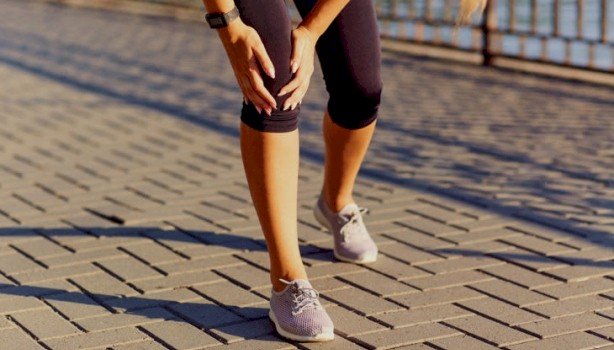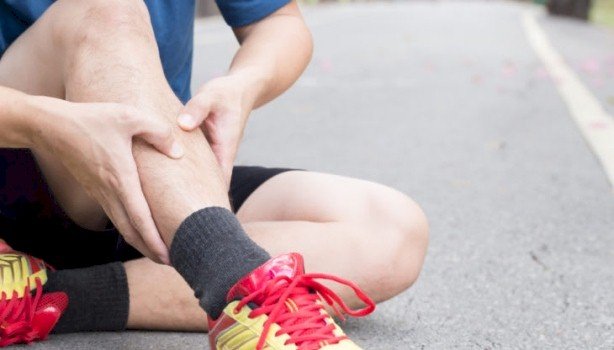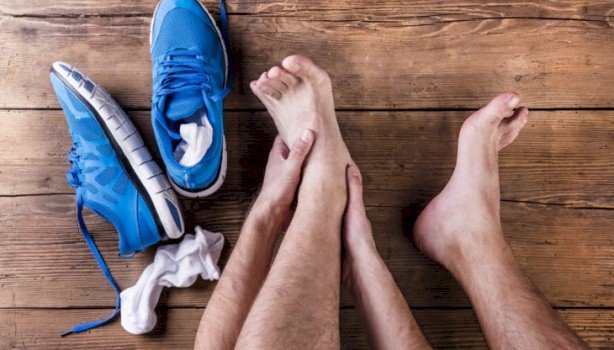
This usually applies to the weekend warriors out there who decides to exercise to excess, and will get injured from a variety of bodily ailments. What they claim is “no pain, no gain,” and as a result will get hurt. Most often, many are just doing the workout wrong, or pushing themselves too hard.
Although working out is an excellent way of getting fit while burning off stress, all while boosting up metabolism, getting injured will suddenly put a halt on things.
Those who even exercises on a regular basis, also remain prone to injuries, as we see professional athletes get hurt often.
7. Iliotibial Band Syndrome (ITB)

This injury is common for those who run, where there’s severe pain on the outside of the leg. The most notable symptom of this injury, is typically pain and swelling on the outside of the knee.
Most runners will mistakenly think they have a knee injury, and may of never heard of ITB.
ITB is an actual ligament that runs up and down the outside of the thigh, starting from the hip down to the shin, and that’s what causes the pain.
What this band can do is rub against the knee joint, which causes the inflammation. ITB occurs once the leg turns inward too often.
The cause of this injury is because of worn out shoes or the wrong shoes, running downhill too often, or running for too long.
This injury is common for beginner runners trying too hard.
6. Rotator Cuff Injuries

This is a group of muscles which stabilizes the shoulder joint and become susceptible to injury, especially when doing contact sports.
If you begin to experience exercise related pain, once you move your arm behind your back or towards the side, it could be a sign you’ve damaged your rotator cuff.
Exercises that can potentially affect the rotator cuff, includes repetitive motion activities like swimming or throwing.
The key becomes to strengthen this area as part of your warm up routine, without overdoing it, such as lifting weights that are too heavy.
Make sure you have correct posture, to avoid compressing the joint.
5. Lower Back Pain And Strain

Most are familiar with getting stiff back pain after doing certain exercises, such as when working out their core, or their back muscles.
The pain occurs because of the body’s natural inflammatory response when exercising, which causes what’s known as micro-trauma.
This occurs on the muscles and the surrounding connective tissues. Never mistake this soreness as an injury, as muscle soreness after exercising is normal.
On the other hand, if acute pain suddenly occurs during a work out, that should be a cause for concern. There may be other symptoms such as tingling or numbness in the area.
This pain can be avoided by strengthening the core muscles, such as the abs and back. Make sure you lift weights properly, starting with the hamstrings.
4. Shin Splints

Almost everyone at one time or another, has experienced shin splints to varying degrees. The pain can be moderately painful, to temporarily debilitating.
The pain of shin splints is a sharp sliver, that shoots up and down the front of the lower leg.
Shin splints are common for beginner runners, mainly because they attempt to run distances that are too far, or have poorly fitting shoes.
What running on hard surfaces can also do, is aggravate those muscles.
There are a variety of ways to avoid getting shin splints, anything from starting slow, to getting proper shoes for your body type and running style.
Warming up properly is usually the best solution.
3. Ankle Sprains

When working out, twisting an ankle is common. It can occur when running on a treadmill or running outdoors.
The biggest issue with treadmills, is losing focus and accidentally stepping off the belt while it is moving forward.
Running outside with improper shoes on uneven terrain, can also cause ankle sprains.
What’s recommended is knowing exactly where the “stop” button on the treadmill is, to avoid twisting an ankle, or worse, falling.
When jogging outdoors, try staying on level ground such as sidewalks, while avoiding or knowing exactly where the curbs and potholes are.
Be extra careful when running in poor weather conditions such as snow.
2. Foot And Ankle Pain

Foot pain can result from poor posture, or by sitting for too long. What this activates is a chain reaction, that shifts to the feet when standing up.
What going for a run with an altered centre of gravity does, is naturally tips you forward, resulting in the heel being higher than the toe.
The feet and the ankles then takes the brunt of the impact.
The solution when experiencing this foot and ankle pain while running or walking, is by finding better fitting shoes, such as one that features a lower-profile heel.
Find a shoe that will evenly spread out the impact across the entire foot, which can help alleviate these problems.
1. Tendinitis

Tendinitis occurs once the tendons which connects the bone to the muscles becomes inflamed, which then causes swelling, irritation and pain.
This injury can occur slowly over time, and then build up gradually. It can also occur more suddenly, because of a serious incident or accident.
Sporting activities associated with tendinitis, include elbow based exercises such as golf, tennis, or baseball.
The best way to avoid this injury, is by properly stretching out the area before the exercise or sport.
There can also be a variety of non-exercise related causes when it comes to tendinitis, such as arthritis, poor posture, and at times an infection.


